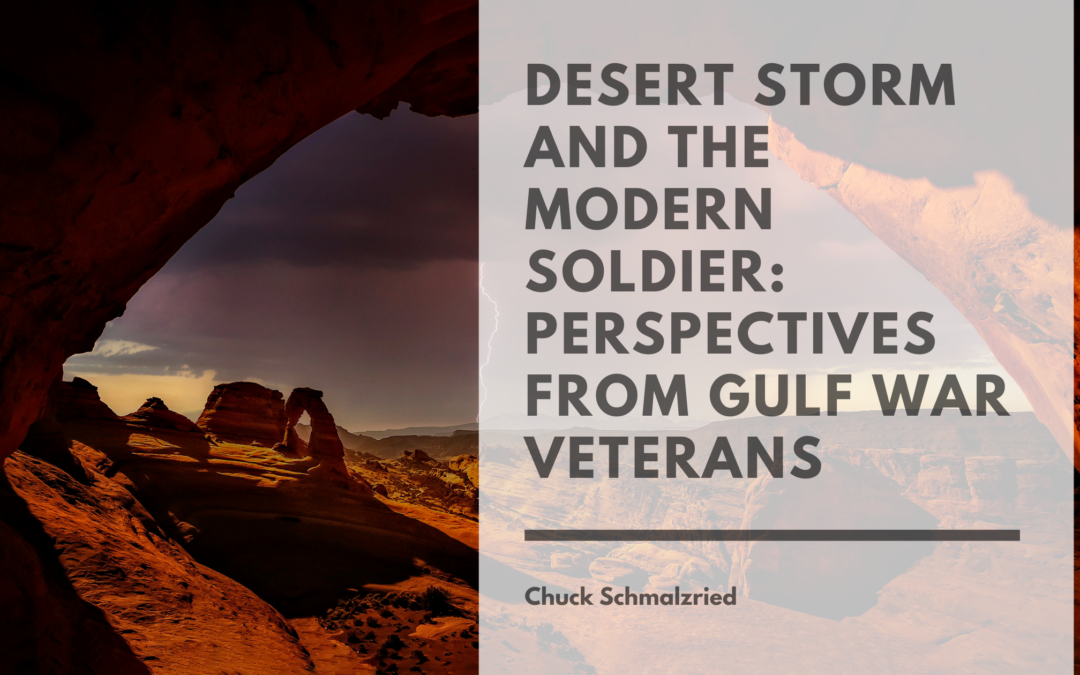Operation Desert Storm, launched in 1991, marked a turning point in modern military history. It was one of the first wars fought with advanced technology, such as precision-guided missiles and satellite communication, that forever changed the way wars are conducted. The veterans who served in this conflict represent a new era of warfare, where quick, decisive action and high-tech equipment became the norm. Their stories offer insight into the changing nature of military service and the challenges faced by modern soldiers.
The Dawn of a New Kind of Warfare
For many Gulf War veterans, Operation Desert Storm was a stark contrast to previous wars. The speed and precision of the U.S. military’s response to Iraq’s invasion of Kuwait left a lasting impression on those who served. Lieutenant Colonel Mark Stevens, a fighter pilot during the war, recalls the sheer power of the U.S. military’s air campaign. “We had technology that was light years ahead of anything the enemy had,” he said. “It was a totally different kind of war—one where we could hit a target from miles away without ever seeing it.”
The rapid success of Operation Desert Storm is often credited to the integration of modern technology into military strategy. However, for the soldiers on the ground, the war still presented significant challenges. Corporal Jamie Harris, who served as a tank operator during the conflict, described the difficulties of navigating the harsh desert terrain. “It wasn’t easy out there,” he said. “The sandstorms, the heat—it took a toll on us, even with all the high-tech gear we had.”
The Human Side of War
While Operation Desert Storm is often remembered for its technological advancements, the human side of the conflict is equally important. Many Gulf War veterans faced the same physical and emotional challenges as those who served in earlier wars. For Harris, the experience of combat left a deep emotional mark. “Even with all the technology, war is still war,” he said. “We lost friends out there, and that’s something you carry with you for the rest of your life.”
The Gulf War also marked the beginning of a new set of health challenges for veterans. Many who served during Operation Desert Storm later reported suffering from what came to be known as Gulf War Syndrome, a collection of symptoms including chronic fatigue, headaches, and joint pain. Although the cause of the syndrome remains unclear, it has affected thousands of veterans, including Stevens, who described it as “the war that followed us home.”
Transitioning to Civilian Life
Like veterans of other conflicts, those who served in Operation Desert Storm faced challenges in transitioning back to civilian life. The rapid pace of the war and its relatively short duration left many soldiers feeling unprepared for the abrupt shift back to normalcy. For Harris, adjusting to life after the war was one of the toughest battles he faced. “One day you’re in the middle of a desert, and the next, you’re back home. It’s a shock to the system,” he said.
Many Gulf War veterans found solace in reconnecting with their fellow soldiers through veterans’ organizations and support groups. For some, these connections helped them navigate the emotional and psychological challenges of returning to civilian life. Stevens became involved in a Gulf War veterans’ advocacy group, where he works to raise awareness about the health issues facing his fellow soldiers. “We fought together in the desert, and now we’re fighting for each other back home,” he said.
A Legacy of Strength and Innovation
The veterans of Operation Desert Storm represent a new era in military history—one defined by advanced technology and rapid, decisive action. Their stories remind us that while the tools of warfare may change, the personal sacrifices of those who serve remain constant. From the fighter pilots in the skies to the soldiers on the ground, the veterans of the Gulf War showed extraordinary courage and resilience in the face of new challenges.
As we look back on Operation Desert Storm, it’s important to remember not only the technological achievements of the war but also the human cost. The veterans who served in this conflict faced the same struggles as their predecessors, and their stories deserve to be told and honored for the lessons they offer about service, sacrifice, and the evolving nature of warfare.
